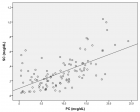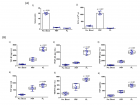About The University of Hong Kong
The University of Hong Kong
Articles by The University of Hong Kong
Drug treatment and rehabilitation in China: Theoretical rationales and current situations
Published on: 18th February, 2021
OCLC Number/Unique Identifier: 8946740322
Global drug use has reached epidemic levels, with approximately 269 million drug users worldwide [1]. Problematic drug use may lead to serious physical, social, and mental health problems. An estimated 167,000 deaths attributed to drug-related disorders worldwide in 2017 [2]. The rising global drug use and its severe adverse consequences make the drug treatment/rehabilitation a top priority for policymakers. In modern China, illicit drug use has raised great concern from both the academia and the public. Nearly 2.15 million Chinese were registered as drug users in 2019 [28]. Drug-related crimes and deaths are also increasing [29]. The current drug treatment programs in China are mainly compulsory, addressing coercion and discipline. However, the effectiveness was found to be low [3]. Situated in the fields of social work, public health, and psychology, Chinese scholars and practitioners have conducted some empirical tests for these drug treatment/rehabilitation programs and already found several effective preventive factors in the programs. However, the existing research on the design and evaluation of Chinese drug treatment/rehabilitation programs rarely investigate the theoretical rationales behind these programs. This study would address three criminological theories that have been applied to explain drug treatment and rehabilitation in Western societies: Differential Association Theory, Social Bonding Theory, and Labeling Theory. Similar theoretical rationales could be learnt and adopted by Chinese programs.
Dealing with Depression in Family Caregivers
Published on: 27th March, 2017
OCLC Number/Unique Identifier: 7317595274
Aims and objectives: By reporting the use of therapeutic nursing interventions to facilitate the process of change in a depressive elderly caregiver, this paper seeks to underline the importance of fitting interventions to individual clients.
Background: In assisting families of chronic illness sufferers, it must be remembered that the perceptions and functions of both clients and families are determined by family members, and that changes, if any, are made by those clients and families, rather than by nurses. However, nurses do play an important role in facilitating the process of change.
Design: This is a case report.
Methods: A case study of a depressive elderly caregiver is used to examine the use of therapeutic nursing interventions to facilitate the process of change with problem analysis, case conceptualisation and specific skills employed documented.
Results: The change from one therapeutic approach (Cognitive-behavioural therapy) to another (Narrative Therapy) facilitates enlisting the caregiver’s unique strengths, resources and competence to overcome the difficulties and challenges identified during the process of change. In dealing with depression in family caregivers, nurses should not only be flexible but also remain sceptical in using different approaches, with heightened awareness of the client’s circumstances.
Brachial Plexus Schwannoma: Report of 4 cases with Intralesional Enucleation
Published on: 28th December, 2017
OCLC Number/Unique Identifier: 7869137380
Brachial plexus tumours are rare. It comprises of only 5% of all tumours of upper limb [1]. The two most common brachial plexus region tumors are schwannomas and neurofibromas [2-4]. Both are benign and arise from the nerve sheath. XiaotianJia et al., published a large case series of 143 patients with primary brachial plexus tumors in 2016. In his series, there are 119 schwannoma and 12 neurofibromas [3]. Schwannomas are most frequently found in the head and neck region, which comprises 25% of all Schwannomas. There are only about 5% of schwannomas present as brachial plexus tumours [5].
Chase out or unfortunate coping strategy? Analysis of urban settlement of the homeless addicts at public parks
Published on: 8th September, 2021
OCLC Number/Unique Identifier: 9231824192
Extant studies have labelled persons-with-addiction and the homeless as ‘invaders’ of public parks, aggressive/violent with psychiatric and medical disorders, a burden to the society, and transmitters of most deadly airborne or chronic diseases. Literature subtly discuses that such people must be chased out of the public. Yet, such studies have not concurrently analyzed from the viewpoint of urban parks users, the persons-with-addiction and the homeless people what needs to be done to improve the situation. Therefore, the study aims to explore whether problematic communities and subcultural factors make the disadvantaged resort to negative copping strategies when their legal means are blocked: how the other park users respond to the homeless drug addicts’ hardship: and the possible suggestions from all the park users. This is done with reference to social disorganization and Sub-culture theory, and through ethnographic research approach (8 months field observation) and in-depth-interviews with 27 participants. Our study found that persons-with-addiction and the homeless are not always aggressive/violent/harmful as they have been labelled. But only disadvantaged individuals who desire to emulate the ideals and ambitions of the middle class but lack resources to achieve such success. Being overwhelmed with such frustrations from their dilemmas, they consider themselves ‘double-failures’ and retreat into drug addiction and find abode in the public spaces. We therefore conclude that persons with addiction and the homeless people are not always violent and criminal persons who are to be chased out of public parks. But only disadvantaged individuals who need help for choosing a negative coping strategy.

HSPI: We're glad you're here. Please click "create a new Query" if you are a new visitor to our website and need further information from us.
If you are already a member of our network and need to keep track of any developments regarding a question you have already submitted, click "take me to my Query."



















































































































































